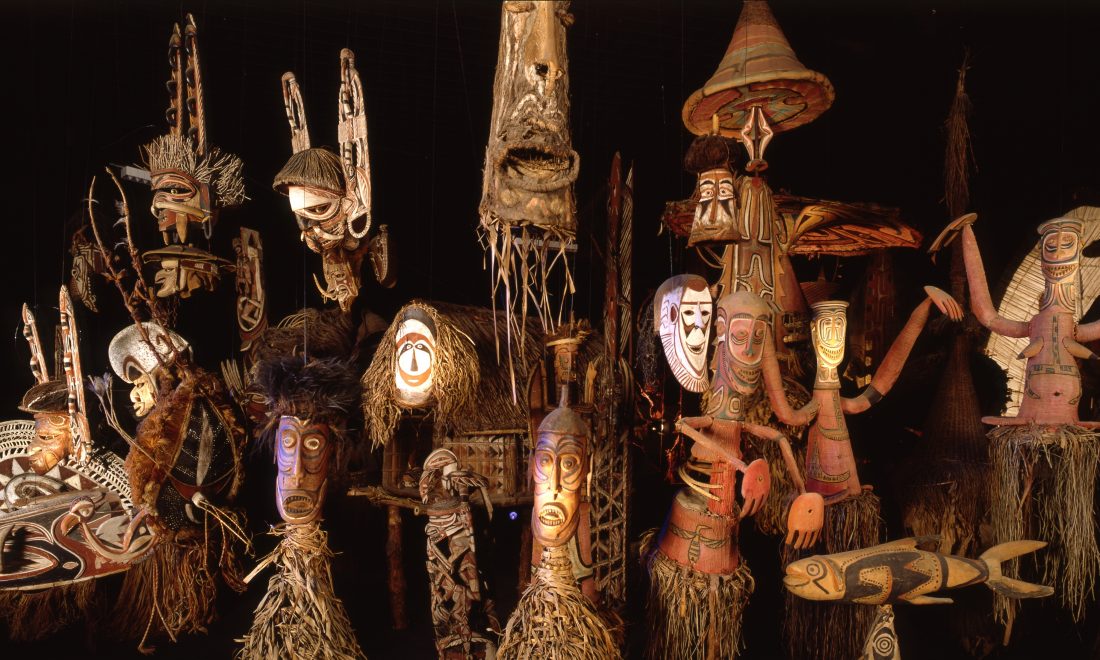Masks of the South Seas
Masks from New Guinea, the Bismarck Archipelago and neighboring island states

On the islands of the South Pacific, mask performances were a central feature of social life in the late 19th and early 20th centuries – in many places they still are today. In ritualized contexts, human experiences and fabulous narratives were staged. Mythical creatures and ancestors appeared in the masks and through them made contact with people and descendants. Each mask is associated with its own sphere of use and imagination. The secret knowledge about the masks was guarded by male societies.
The exhibition shows a selection of masks, dance equipment and ancestral figures from New Guinea, the Bismarck Archipelago and neighboring island states and gives an insight into the religious concepts and social relations of the individual societies.
The title and structure of the exhibition allude to exoticizing ideas of the South Seas. By means of romanticized travel accounts of the 19th century, images of paradisiacal and mysterious conditions were associated with the idea of the South Seas in the imagination of Europeans. At the same time, most European viewers remained unaware of the inhabitants’ environments and mindscapes.
The presence of the masks in the Museum am Rothenbaum is closely linked to the residence of German explorers, merchants, missionaries and colonial administrators in the territory of the so-called German South Seas. The imperial protectorate was administered by the German New Guinea Company until it became the German Empire’s colony of German New Guinea in 1899. The Europeans brought back art objects and ritual items of the population of the groups of islands to European collections as ethnographic objects and hence established and fed the fascination of the South Seas.
Publication (in German)
Köpke, Wulf und Bernd Schmelz (Ed.), 2003: Hamburg: Südsee. Expedition ins Paradies. Hamburg: self-published. (Mitteilungen aus dem Museum für Völkerkunde Hamburg, NF 33)
The exhibition was supported by a grant from Freunde des Museums am Rothenbaum MARKK e.V.